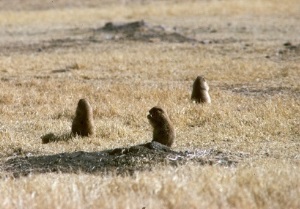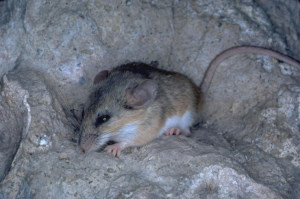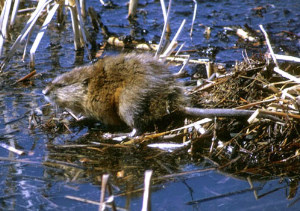Rodents
Rodents were an important source of protein and fat for the native peoples of the Trans-Pecos. These small creatures live in many different habitats and were easy to capture with nets, snares, traps devised from wood and plant fiber, or even a quick flick of the wrist with a digging stick. Prehistoric peoples did not always bother with cleaning or cooking such tiny prey; rather they made crunchy but nutritious meals of small rodents, bones and all. Rodent bones, whole and fragmentary, have been found a virtually every archeological site with preserved faunal materials that has been excavated in the Trans-Pecos. They were truly ubiquitous menu items.
To cite only a few examples, the remains of woodrat (Neotoma sp.), cotton rat (Sigmodon hispidus), and kangaroo rat (Dipodomys sp.) have been found at Hueco Tanks, Gobernadora, and Granado Cave, and pocket mouse (Perognathus hispidus) has been identified at Hueco Tanks. Though rats and mice appear most frequently in the archeological record and ethnographic accounts, they are not the only rodents eaten by the native peoples of the Trans-Pecos. Pocket gopher (Geomyidae sp.) and blacktailed prairie dog (Cynomys ludovicianus) have been found at Hueco Tanks, Turquoise Ridge, and Granado Cave, ground squirrel (Spermophilus spp.) has been found at Squawteat Peak and Wind Canyon, and muskrat (Ondatra zibethicus) has been found at Gobernadora. In addition to meat, muskrat provided prehistoric peoples with valuable fur.

Blacktailed prairie dogs were among the rodents that Trans-Pecos peoples consumed. Photo courtesy Texas Parks and Wildlife (TPWD).
|

|
